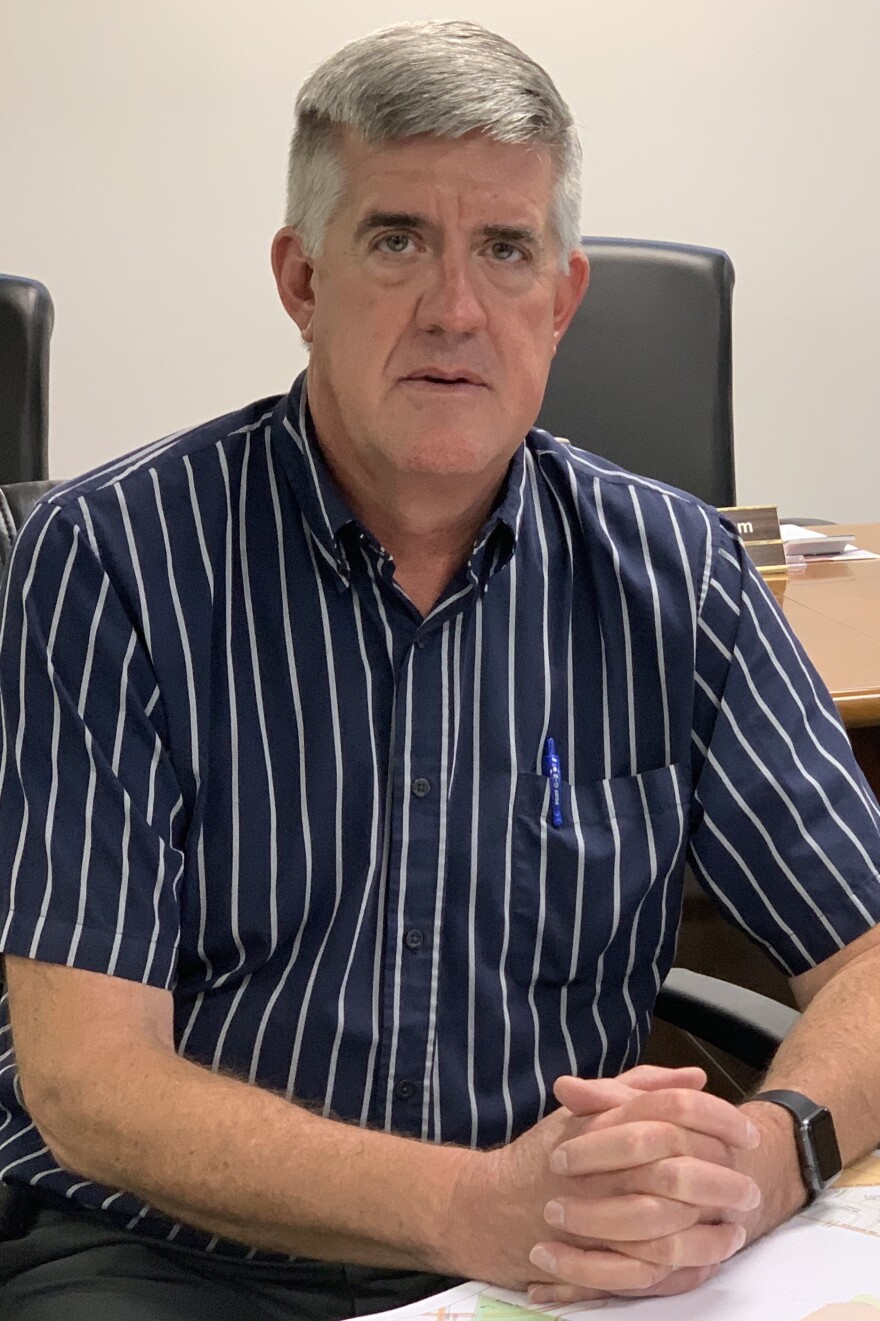The military is spending millions of dollars to clean up water contamination around bases throughout the country. But people living with the contamination say the money has not gone nearly far enough.
For decades, the Venetucci family ran a small farm in Colorado Springs. Each Halloween, they grew pumpkins that they gave away to local children.
When the Pikes Peak Community Foundation took over the farm in 2006, it continued the pumpkin tradition and also grew organic vegetables - until chemical runoff traced to firefighting foam at nearby Peterson Air Force Base contaminated the soil.
"This kind of blindsided us," said Sam Clark, the Foundation's director of philanthropy. "Nobody really understood what the firefighting foam was."

The toxic firefighting foam was used for training exercises on military bases across the country. It contains some of a family of compounds broadly known as PFAS chemicals. PFAS have long been used in a variety of applications, including coating nonstick cookware and making stain-resistant fabrics. The PFAS foams have been used broadly used across many industries because of their track record efficiently extinguishing petroleum-based fires.
The Environmental Protection Agency issued a health advisory in 2016 that warned of a connection between PFAS and certain types of cancer.
After the advisory and the discovery of widespread groundwater and soil contamination near Peterson Airforce Base, the Pikes Peak Community Foundation shut down organic vegetable production at the Venetucci farm. It opted to instead raise lower-priced feedstock for horses.
It's one example of the financial burden this region still bears from the pollution, despite the $50 million the Air Force has spent on cleanup around Peterson.
"There are 60,000 stories just like this and they're happening at the kitchen sink in every Fountain, Widefield and Security home," Clark said of the communities where water was tainted by the foam.
The Pikes Peak Community Foundation, as well as the nearby Security Water District, have sued the Air Force over the chemicals. District general manager Roy Heald said they had to find a new source of water for their customers, a complicated process which involved the construction of a mile-long pipeline to buy water from Colorado Springs. The cost of the pipeline and the first two years of water set the district back $6 million.
"There was no blue light special on those costs," Heald deadpanned.
In 2018, the Air Force stepped in to cover the district's water costs until the construction of a new treatment facility is complete. The Air Force is also paying for the facility. Still, Heald said it's unclear what the ongoing long-term costs will be for the district when it comes to the new facility. It will be needed as long as the contamination remains in the groundwater, which could essentially be forever.
"Maybe a couple of weeks less than forever, I don't know," Heald said.
As of June, $357 million has been spent on PFAS cleanup around 22 Air Force installations nationwide. But many who live near the sites say the money barely touches on the full problem.

Residents face high costs for water and testing
The PFAS levels found in Liz Rosenbaum's water district are just under what the EPA deems as hazardous. Rosenbaum lives about 30 miles from Peterson, and the Air Force isn't doing any cleanup in her community. She doesn't drink from her tap and spends about $70 per month to have drinking water delivered.
"I don't want to die of kidney cancer, you know?" she said.
There's disagreement even between government agencies about what concentration of PFAS is safe for humans. A division of the Centers for Disease Control and Prevention found that levels should be set seven to 10 times lower than the EPA's health advisory.
Genna Reed, the lead PFAS researcher for the Union of Concerned Scientists, said the Department of Defense, "misrepresented the scope of this issue in order to avoid having to pay."
The Air Force would not grant an interview for this story, but states on its PFAS website that "protecting human health is our priority."
Reed said the Department of Defense has limited which PFAS chemicals it tests for in groundwater and releases data only when the test results are above the higher EPA threshold.
"Community members who have been exposed to this chemical and were not told of its release are being the ones left with the burden of paying for this contamination and paying to find out how much is in their water and also to find out how much is in their blood," Reed said.
Rosenbaum said the full blood panel to test for PFAS chemicals costs about $700 - out of reach for many living near Peterson.
Rosenbaum has organized a local clean water coalition to go after grants to test residents' blood and water. She's frustrated they have to do that work themselves.
"There's absolutely no reason for our communities to go into debt over another water contamination that we didn't cause," she said.
This story was produced by the American Homefront Project, a public media collaboration that reports on American military life and veterans. Funding comes from the Corporation for Public Broadcasting.




